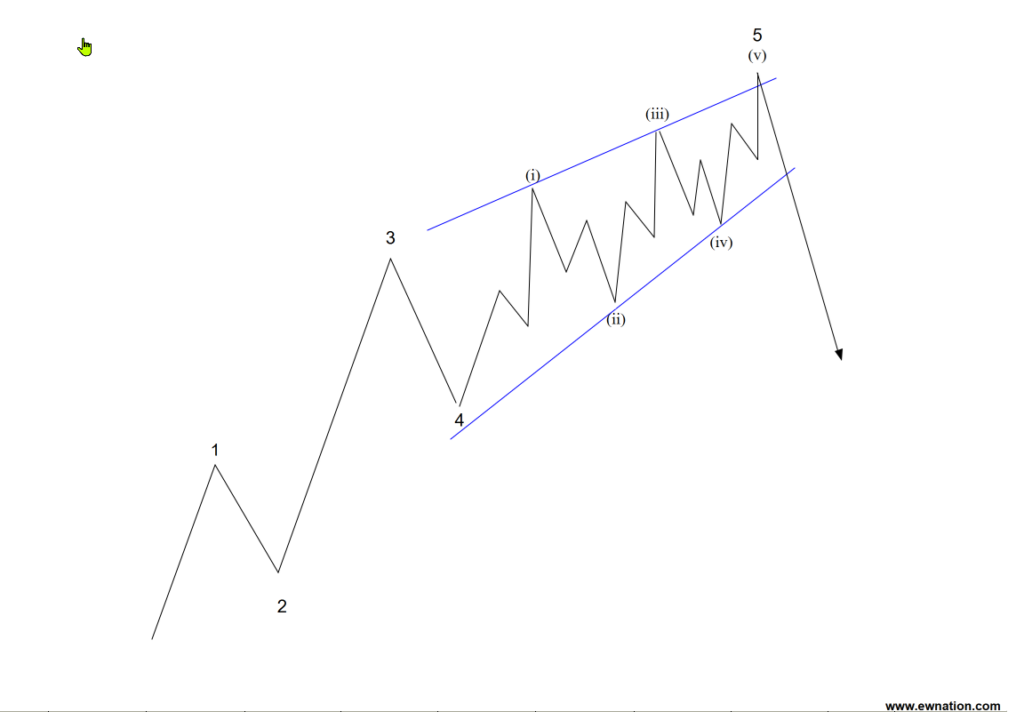Understanding Elliott Wave Ending Diagonals: A Beginner’s Guide
If you’ve been exploring Elliott Wave Theory, you may have come across the term Ending Diagonal. This pattern is a key concept in technical analysis and can provide valuable insights for traders. In this article, we’ll break down what an ending diagonal is, how to identify it, and what it means for market movements.
What Is an Elliott Wave Ending Diagonal?
An Ending Diagonal is a specific pattern that appears in the final wave of an impulse (Wave 5) or corrective wave (Wave C). Unlike a standard impulse wave, which follows the 5-3-5-3-5 structure, an ending diagonal has a unique 3-3-3-3-3 formation, meaning that each of its five sub-waves is composed of three-wave structures.
This pattern indicates that the current trend is losing momentum and that a reversal or significant correction may be imminent. Ending diagonals often occur in highly emotional market conditions, signaling exhaustion in the prevailing trend.
Key Characteristics of an Ending Diagonal
-
Structure: An ending diagonal consists of five waves, each subdivided into three smaller waves (a 3-3-3-3-3 pattern).
-
Contracting or Expanding Shape: The trend lines connecting the peaks and troughs converge (contracting diagonal) or diverge (expanding diagonal).
-
Occurs in Wave 5 or Wave C: These patterns typically form at the end of an impulse wave or a correction.
-
Overlapping Waves: Unlike regular impulse waves, ending diagonals often show wave overlap between Wave 1 and Wave 4.
-
Loss of Momentum: Ending diagonals signify a weakening trend and often precede a strong reversal or correction.
How to Identify an Ending Diagonal on a Chart
To spot an ending diagonal:
-
Look for a wedge-like structure forming in Wave 5 or Wave C.
-
Confirm that each wave subdivides into three waves instead of five.
-
Check for wave overlap, especially between Wave 1 and Wave 4.
-
Observe price action slowing down and volume decreasing as the pattern completes.
What Happens After an Ending Diagonal?
Once an ending diagonal completes, traders typically expect a sharp reversal. Since this pattern signals exhaustion, price action often breaks sharply in the opposite direction, either correcting a prolonged trend or starting a new cycle.
For example, if an ending diagonal forms in Wave 5 of an uptrend, the market is likely to experience a significant decline as traders take profits. Conversely, if it forms in Wave C of a correction, the market may begin a strong rally.
Trading Tips for Ending Diagonals
-
Wait for Confirmation: Avoid jumping into a trade too early. Wait for a breakout in the opposite direction to confirm the reversal.
-
Use Support and Resistance Levels: Identify key price levels to set stop-loss and take-profit orders.
-
Combine with Other Indicators: Look for divergence in RSI or MACD to strengthen the confirmation of a reversal.
-
Manage Risk: Ending diagonals can sometimes extend unpredictably. Use proper risk management strategies to protect your trades.
Conclusion
Ending diagonals are powerful patterns that signal trend exhaustion and potential reversals. Understanding their structure and characteristics can help traders anticipate major turning points in the market. By combining ending diagonal analysis with other technical tools, traders can improve their decision-making and enhance their overall trading strategy.
If you’re new to Elliott Wave Theory, keep practicing and reviewing historical charts to get comfortable identifying these patterns. Happy trading!

